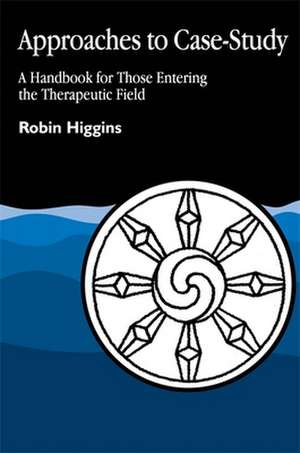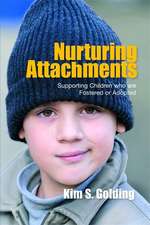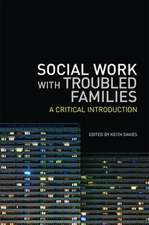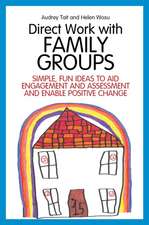Approaches to Case-Study: A Handbook for Those Entering the Therapeutic Field
Autor Robin Higginsen Limba Engleză Paperback – 30 sep 1993
Preț: 293.54 lei
Nou
Puncte Express: 440
Preț estimativ în valută:
56.17€ • 58.65$ • 46.38£
56.17€ • 58.65$ • 46.38£
Carte tipărită la comandă
Livrare economică 15-29 aprilie
Preluare comenzi: 021 569.72.76
Specificații
ISBN-13: 9781853021824
ISBN-10: 1853021822
Pagini: 120
Ilustrații: black & white illustrations
Dimensiuni: 158 x 233 x 4 mm
Greutate: 0.32 kg
Editura: Jessica Kingsley Publishers Ltd
ISBN-10: 1853021822
Pagini: 120
Ilustrații: black & white illustrations
Dimensiuni: 158 x 233 x 4 mm
Greutate: 0.32 kg
Editura: Jessica Kingsley Publishers Ltd
Notă biografică
Robin Higgins, MB BCh, DPM, BMus, is a consultant child psychiatrist (retired). He has worked with the Laban Centre and Goldsmiths College and his continuing interest is in the arts therapies.
Cuprins
Some preliminary questions I: THE IDIOM OF CASE-STUDY (1). 1. The Case as the Unit of Accountability. 2. The Patient and the Case. 3. The Case as Person and/or Situation. 4. Roles and Relations. 5. A Practical Exercise in Exploring Roles. 6. Orientation. 7. The Case as a Unique Instance or Example of a Generality. 8. Essential Patterns in a Case-study. II: THE REFERRAL. Some questions to be asked before the patient is seen. 9. Being Forewarned: Advantages and Disadvantages. 10. The Referral Letter and Other Sources of Pre-meeting Knowledge. 11. The Sharing of Anxieties. Some basic questions about the interview. 12. The Interview. 13. Data and Relations. 14. Fact, Inference and Verification. 15. Verbatim and Remembered Report. 16. Transference and Counter-transference. 17. Un-history. III: THE COMPLAINT. Questions for eliciting complaints from the patient and others. 18. Viewpoints in Complaints. 19. The Occurrence of Illness. 20. Information Given and Withheld. IV: THE FAMILY HISTORY. Questions for constructing a family tree. 21. Family and Genetics. Questions for setting a patient in a cultural background. 22. Family and Culture. 23. Family Crises. V: THE PERSONAL HISTORY. Key questions for assessing the nature of each developmental phase in the patient's life. 24. Developmental Phases: Foetal Life; Birth; Infancy; the Toddler; School and Latency; Adolescence; the Middle Years; the Third age; old age. Questions for mapping the patient's personality. 25. Personality: the Nomothetic Measures; Unique Adaption. VI: PATTERNS OF PROGRESS. Questions about sequential patterns. 26. Transformation. 27. Ups and Downs. 28. Forwards and Backwards. 29. Repetition and Variation. 30. Symmetry and Inversion. 31. Paradox. 32. Mirroring. VII: FORMULATIONS. Questions about classifications and treatment plans. 33. Diagnosis, Differential Diagnosis, and Prognosis. 34. Medical Diagnostic Classifications. 35. Classification of Psychological Disorders. 35. Treatment Plans. 36. Initial and Final Formulations. VIII: CASE-STUDY AND RESEARCH. Questions for the setting-up and testing of hypotheses in a case-study. 37. Meaning and Cause. 38. Basic Concepts in Research: Variables and Hypotheses Including the Null Hypothesis and Chance; Populations and Samples; Frequency and Distribution; Univariate and Multivariate Analysis; Correlation Coefficients; Regression Lines; Associations and Cause. 39. Single Case Research. 40. Phases in Research Projects. IX: THE IDIOM OF CASE-STUDY (2). Questions about the final form of the case-study. 41. More on Transformation. Communication Through the Medium. 42. Media and Modes. 43. The Story-line. 44. Case-study and Biography: Truth as Fact and Truth as Fiction; Example; Confidentiality. 45. Genre and Diagnosis. References. Index.














